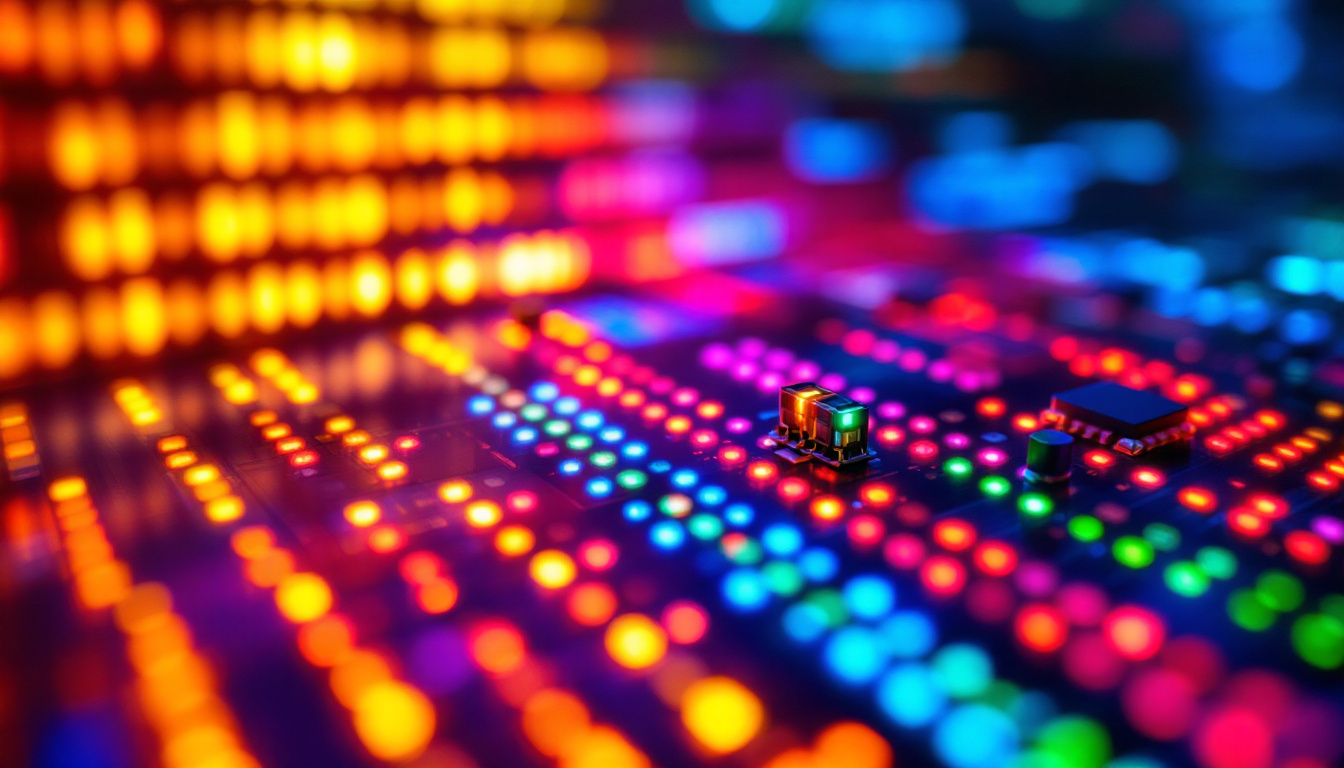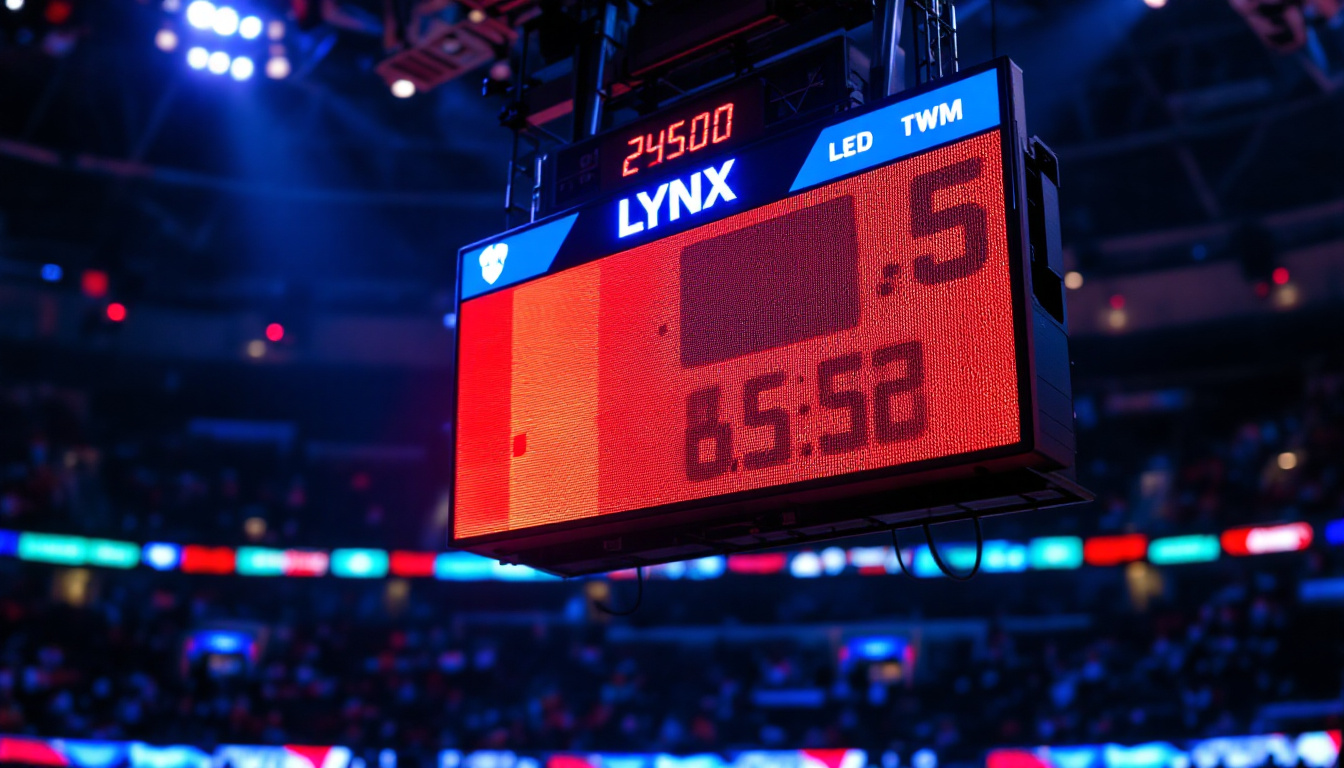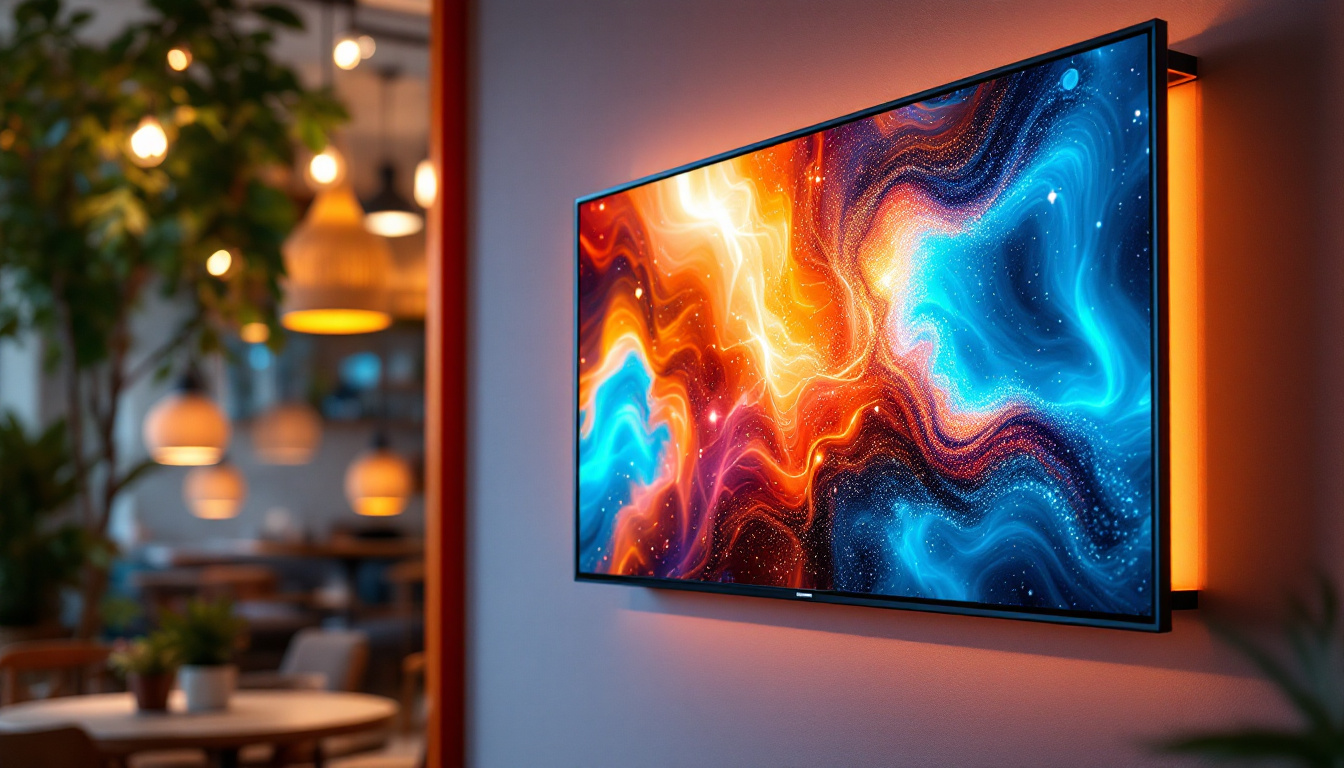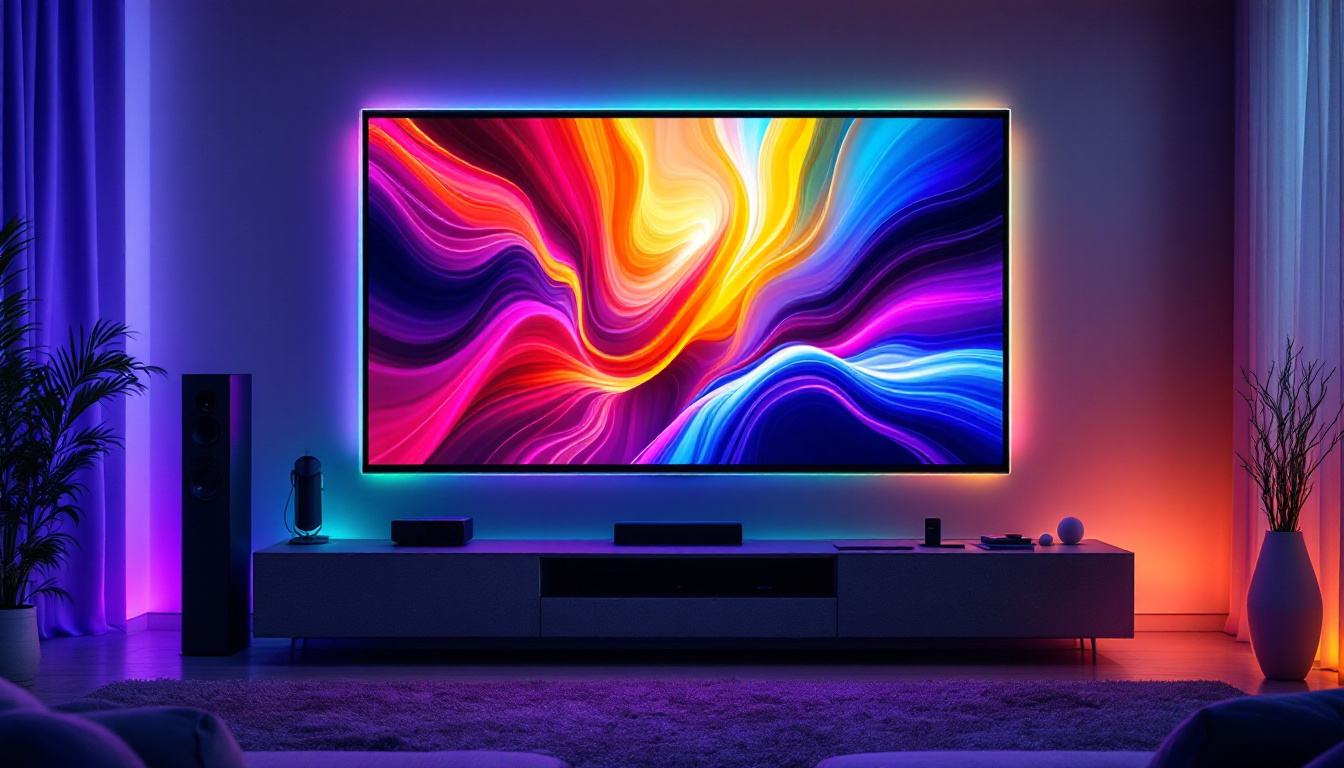In the world of electronics, light-emitting diodes (LEDs) have revolutionized the way we display information. Among the various configurations of LED displays, the common cathode configuration stands out for its simplicity and effectiveness. This article delves into the intricacies of common cathode LED displays, exploring their design, functionality, advantages, and applications.
Understanding LED Displays
LED displays are ubiquitous in modern technology, found in everything from digital clocks to large-scale billboards. They utilize semiconductor materials to emit light when an electric current passes through them. The configuration of these LEDs can significantly affect their performance and application.
What is a Common Cathode Configuration?
The common cathode configuration refers to a specific way of connecting the cathodes of multiple LEDs to a common ground. In this setup, each LED’s anode is connected to a control circuit, allowing for individual control of the light emitted by each LED. This arrangement contrasts with the common anode configuration, where the anodes are connected together.
In a common cathode display, when a voltage is applied to the anode of a particular LED, it illuminates. The common cathode serves as the reference point for the circuit, simplifying the design and reducing the number of required connections. This streamlined approach not only enhances reliability but also makes it easier for engineers to troubleshoot and maintain the display systems.
How Common Cathode Displays Work
The operation of a common cathode LED display is relatively straightforward. When the control circuit sends a positive voltage to the anode of a specific LED, the current flows from the anode through the LED to the common cathode, causing the LED to light up. This process can be controlled using microcontrollers or other digital devices, allowing for dynamic display capabilities.
Common cathode displays can be used in various configurations, including seven-segment displays, matrix displays, and more. The flexibility of this design makes it a popular choice for many electronic applications. For instance, in seven-segment displays, each segment can be lit independently, enabling the display of numbers and some letters, making it ideal for clocks, calculators, and scoreboards. Additionally, matrix displays allow for the representation of complex graphics and animations, further showcasing the versatility of common cathode configurations.
Moreover, the energy efficiency of LED technology is a significant advantage. Common cathode displays consume less power compared to traditional incandescent bulbs, which not only reduces operational costs but also contributes to longer lifespan and lower heat generation. This efficiency is particularly beneficial in applications where displays are used continuously, such as in public transportation systems or outdoor advertising, where visibility and longevity are crucial. As technology advances, the integration of smart features into common cathode displays, such as remote control and automation, continues to enhance their functionality and user experience.
Advantages of Common Cathode Displays
The common cathode configuration offers several advantages that make it a preferred choice in many applications. Understanding these benefits can help in selecting the right display for specific needs.
Simplicity in Circuit Design
One of the primary advantages of common cathode displays is their simplicity. By connecting the cathodes together, fewer connections are needed, which simplifies the overall circuit design. This reduction in complexity can lead to easier troubleshooting and maintenance, making it an ideal choice for both hobbyists and professionals.
Additionally, the straightforward design allows for easier integration with microcontrollers, which often have limited output pins. The common cathode configuration enables multiple LEDs to be controlled using fewer pins, optimizing the use of available resources.
Improved Brightness Control
Common cathode displays also provide enhanced brightness control. Since the control circuit can adjust the voltage applied to each anode independently, it allows for precise control over the brightness of each LED. This feature is particularly beneficial in applications where varying brightness levels are required, such as in signage or decorative lighting.
Moreover, the ability to control individual LEDs means that complex visual effects can be achieved, enhancing the overall aesthetic appeal of the display.
Lower Power Consumption
Another significant advantage of common cathode displays is their lower power consumption. By allowing for individual control of each LED, the display can operate efficiently, turning off unused LEDs and conserving energy. This feature is especially important in battery-powered applications, where energy efficiency is paramount.
Lower power consumption not only extends battery life but also reduces heat generation, contributing to the longevity of the display and surrounding components.
Applications of Common Cathode Displays
Common cathode LED displays find applications across a wide range of industries and technologies. Their versatility and effectiveness make them suitable for various uses, from simple indicators to complex visual displays.
Consumer Electronics
In consumer electronics, common cathode displays are commonly used in devices such as digital clocks, calculators, and home appliances. Their ability to provide clear and bright visual output makes them ideal for displaying numerical information and status indicators.
For instance, many microwave ovens utilize common cathode displays to show cooking times and settings, allowing users to easily read and adjust their selections.
Advertising and Signage
In the advertising industry, common cathode LED displays are frequently employed in signage and billboards. Their bright and vibrant colors attract attention, making them effective for marketing purposes. These displays can be programmed to show dynamic content, such as animations or changing messages, enhancing their impact.
Furthermore, the ability to control individual LEDs allows for creative designs and effects, making them a popular choice for businesses looking to stand out in a competitive market.
Industrial and Automotive Applications
Common cathode displays are also utilized in industrial and automotive applications. In control panels, they provide essential information such as operational status, alerts, and diagnostics. The clear visibility of these displays ensures that operators can quickly assess the status of machinery or vehicles.
In automotive applications, common cathode displays are often used in dashboards to convey crucial information like speed, fuel levels, and warning indicators. Their reliability and clarity are vital for ensuring driver safety and awareness.
Challenges and Considerations
While common cathode displays offer numerous advantages, there are also challenges and considerations that must be taken into account when designing or selecting these displays.
Limited Color Range
One of the limitations of common cathode displays is the restricted color range compared to other display technologies. While advances have been made in LED technology, achieving a wide spectrum of colors can still be a challenge. This limitation may not be significant for applications requiring basic color displays, but it can be a drawback for those needing more vibrant or varied color representations.
In contrast, common anode configurations may offer better color mixing options, making them more suitable for applications that demand a broader color palette.
Heat Management
Another consideration is heat management. Although common cathode displays generally consume less power, they can still generate heat during operation. If not properly managed, excessive heat can lead to reduced lifespan and performance issues.
Designers must ensure adequate heat dissipation through proper placement and ventilation, especially in applications where displays are used for extended periods or in enclosed spaces.
Complexity in Multi-Color Displays
For applications requiring multi-color displays, common cathode configurations can become more complex. While it’s possible to create RGB displays using common cathode LEDs, the control circuitry can become intricate, requiring careful design to manage the color mixing effectively.
This complexity may lead to increased costs and development time, which is an essential factor to consider when planning a project.
Future Trends in LED Display Technology
The field of LED display technology is continuously evolving, with new trends emerging that promise to enhance the capabilities of common cathode displays and other configurations. Understanding these trends can provide insight into the future of LED technology.
Advancements in LED Efficiency
One of the most significant trends is the ongoing improvement in LED efficiency. Manufacturers are consistently working on developing LEDs that consume less power while providing greater brightness and longevity. These advancements will further enhance the performance of common cathode displays, making them even more suitable for a wide range of applications.
As energy efficiency becomes increasingly important in various industries, the demand for more efficient LED displays will likely grow, pushing manufacturers to innovate continuously.
Integration with Smart Technology
Another trend is the integration of LED displays with smart technology. With the rise of the Internet of Things (IoT), common cathode displays are being incorporated into smart devices, allowing for real-time data display and interaction. This integration enables more dynamic applications, such as smart home devices that can provide users with instant feedback and notifications.
As smart technology continues to advance, the potential for common cathode displays to play a crucial role in user interfaces will expand, leading to more intuitive and responsive designs.
Flexible and Transparent Displays
The development of flexible and transparent LED displays is another exciting trend. These innovative designs allow for new applications, such as curved screens and displays embedded in surfaces. Common cathode configurations can be adapted to these new forms, opening up possibilities for creative and functional designs.
As technology progresses, the potential for common cathode displays to be utilized in unconventional ways will continue to grow, pushing the boundaries of what is possible in display technology.
Conclusion
Common cathode LED displays represent a vital component of modern electronic design, offering simplicity, efficiency, and versatility. Their ability to provide clear visual output makes them suitable for a wide range of applications, from consumer electronics to industrial systems.
While challenges exist, ongoing advancements in technology promise to enhance the performance and capabilities of these displays. As the demand for innovative display solutions continues to rise, common cathode configurations will likely remain a popular choice among designers and engineers.
Understanding the principles and applications of common cathode displays is essential for anyone looking to leverage this technology in their projects. With the right knowledge and approach, the potential for creativity and functionality in LED displays is virtually limitless.
Discover LumenMatrix’s Advanced LED Display Solutions
Ready to elevate your project with the latest in LED display technology? LumenMatrix offers a comprehensive range of innovative solutions tailored to your needs. From captivating Indoor and Outdoor LED Wall Displays to dynamic Vehicle and Sports LED Displays, our products are designed to make your brand stand out. Experience the future of visual communication with our Custom, All-in-One, and Transparent LED Displays. Check out LumenMatrix LED Display Solutions today and transform your space into a vibrant canvas of creativity and engagement.































